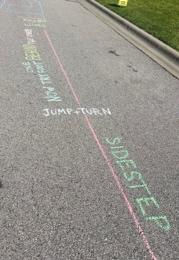Sitting is the New Smoking: Get Moving!
- Logan Garner
- Mar 20, 2024
- 3 min read
You may have heard the line recently, “sitting is the new smoking” and thought to yourself, “Well, this is simply not true. Smoking is much worse.” In a literal sense, this is true. Most can agree that smoking is not good for our health and is simply a “bad habit,” but did we ever stop to think that lack of exercise is also detrimental to our health and is also a “bad habit”? The truth is inactivity is estimated to cause 9% of premature mortality worldwide (1). While 9% may not seem like much, if you take the estimated 7.8 billion people in the world, about 700 million die from simply not exercising. That is more than twice the US population which is roughly 331 million. To relate and compare that to smoking statistics, 480,000 deaths/year in the US are smoking related deaths (2) that equates to only 0.14% of the US population. Want to talk about percentages? How bad does that 9% look now?
Studies and statistics continually suggest a minimum of 150 minutes per week of moderate to vigorous physical activity (3) to reduce the risk of cardiovascular related illnesses and improve overall health and function. Listen, the world knows we have jobs, families, obligations, needs, and wants, etc. that we prioritize to fill our time in a given week. In Laura Vanderkam’s Ted Talk on “How to Gain Control of Your Free Time,” (4) she mentions the biggest reason we find a way to not find time for something is to not prioritize it. Therefore, if we think of taking just 30 min/day to “move,” get out of our chairs and take a break from sitting, and simply find ways to prioritize time to exercise, we can not only help combat the health effects of a sedentary lifestyle but also help boost our mood and productivity. And, here is the good news: it does not all have to be done at once.
So where do we find time, nay, where can we PRIORITIZE at least 30 minutes in our day to get up and move? Try to spread that time throughout your day. For example, if we take an 8-hour work day, get up and perform simple body weight movements such as lunges, squats, push-ups, and/or modification of the aforementioned for 5 minutes each working hour, we could accumulate 40 minutes of exercise in one day. And I know you’re thinking, if only it were that simple, but it CAN BE! A review published in the Journal of Physiological Sciences explored the benefits from method of training and exercise known as TABATA and found it is comparable to those provided by conventional aerobic (i.e. 30 min of low to moderate intensity on treadmill) and anaerobic training (i.e. 60 minutes of resistance training/weightlifting) (5). Simply put, this type of training incorporates both cardiorespiratory and strength/hypertrophy benefits in short duration of time, which means less time for you to prioritize. However, do not think that this will have you running a marathon or competing in a powerlifting meet, but do take into account how you can utilize this within your day to stay moving.
For example, take a movement such as a squat and modify as necessary (i.e. bodyweight squat, chair/box squat at tolerable height, etc) and perform for 20 seconds followed by 10 seconds of rest for 8 rounds. If you do the math, that is a total of 4 minutes. That is a TABATA set. Think of performing a set every hour of an 8 hour work day and you can accumulate 32 minutes of exercise in a day! Below are illustrations of exercises that can be utilized. Mix and match as you see “fit” and modify as necessary pending your health/fitness levels.
References:
Lee IM, Shiroma EJ, Lobelo F, et al. Effect of physical inactivity on major non-communicable diseases worldwide: an analysis of burden of disease and life expectancy. Lancet 2012; 380(9838): 219–229.
U.S. Department of Health and Human Services. The Health Consequences of Smoking—50 Years of Progress: A Report of the Surgeon General. Atlanta: U.S. Department of Health and Human Services, Centers for Disease Control and Prevention, National Center for Chronic Disease Prevention and Health Promotion, Office on Smoking and Health, 2014 [accessed 2019 Jan 30].
CDC. Division of Nutrition, Physical Activity, and Obesity, National Center for Chronic Disease Prevention and Health Promotion. June 2022.
Vanderkam L. TEDtalk. How to Gain Control of your Free Time. October 2016.
Tabata, I. Tabata training: one of the most energetically effective high-intensity intermittent training methods. J Physiol Sci 69, 559–572 (2019). https://doi.org/10.1007/s12576-019-00676-7.















Comments